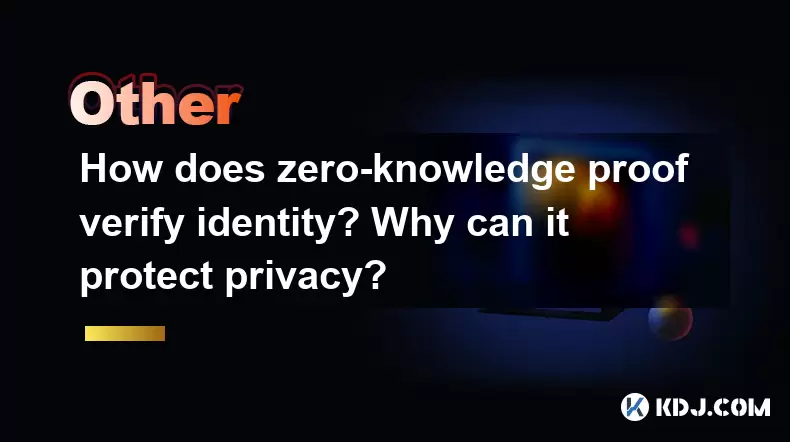-
 Bitcoin
Bitcoin $113900
-1.39% -
 Ethereum
Ethereum $3517
-4.15% -
 XRP
XRP $3.009
1.59% -
 Tether USDt
Tether USDt $0.9997
-0.04% -
 BNB
BNB $766.8
-1.41% -
 Solana
Solana $164.6
-2.38% -
 USDC
USDC $0.9998
-0.02% -
 TRON
TRON $0.3277
0.65% -
 Dogecoin
Dogecoin $0.2023
-1.67% -
 Cardano
Cardano $0.7246
0.05% -
 Hyperliquid
Hyperliquid $38.27
-4.77% -
 Sui
Sui $3.528
-0.52% -
 Stellar
Stellar $0.3890
-0.73% -
 Chainlink
Chainlink $16.16
-2.69% -
 Bitcoin Cash
Bitcoin Cash $539.9
-4.38% -
 Hedera
Hedera $0.2425
-2.00% -
 Avalanche
Avalanche $21.71
-0.97% -
 Toncoin
Toncoin $3.662
5.73% -
 Ethena USDe
Ethena USDe $1.000
-0.02% -
 UNUS SED LEO
UNUS SED LEO $8.964
0.35% -
 Litecoin
Litecoin $107.7
2.33% -
 Shiba Inu
Shiba Inu $0.00001223
-0.40% -
 Polkadot
Polkadot $3.617
-0.97% -
 Uniswap
Uniswap $9.052
-2.49% -
 Monero
Monero $295.1
-3.79% -
 Dai
Dai $0.9999
0.00% -
 Bitget Token
Bitget Token $4.315
-1.85% -
 Pepe
Pepe $0.00001060
0.11% -
 Cronos
Cronos $0.1342
-2.72% -
 Aave
Aave $256.0
-0.87%
How does zero-knowledge proof verify identity? Why can it protect privacy?
ZKP allows users to prove they meet criteria like age without revealing exact data, enhancing privacy in crypto transactions and identity verification.
May 16, 2025 at 02:49 am

Zero-knowledge proof (ZKP) is a cryptographic method that allows one party (the prover) to prove to another party (the verifier) that they know a value or can perform a computation, without revealing any information about that value or computation. This technique has gained significant attention in the cryptocurrency world, particularly for its ability to verify identities while protecting privacy. Let's explore how zero-knowledge proof works to verify identity and why it can protect privacy.
Understanding Zero-Knowledge Proof
Zero-knowledge proof operates on the principle that it is possible to demonstrate knowledge of a secret without revealing the secret itself. The core idea is to provide a proof that is convincing to the verifier, yet does not disclose any sensitive information. This is achieved through a series of interactive or non-interactive protocols where the prover and verifier engage in a challenge-response mechanism.
In the context of identity verification, ZKP allows users to prove they possess certain credentials or meet specific criteria without exposing the actual data. For example, a user can prove they are over a certain age without revealing their exact birthdate. This is particularly useful in blockchain and cryptocurrency applications where privacy is paramount.
How Zero-Knowledge Proof Verifies Identity
To understand how zero-knowledge proof verifies identity, consider the following scenario:
- A user wants to access a cryptocurrency service that requires age verification.
- The service uses a ZKP protocol to verify the user's age without needing to know their exact birthdate.
Here's how the process unfolds:
- The user generates a proof using a ZKP protocol. This proof is based on the user's age, which is compared against a threshold (e.g., 18 years old).
- The proof is sent to the service provider (verifier).
- The verifier checks the proof to ensure it meets the criteria (e.g., the user is over 18).
- If the proof is valid, the user is granted access without revealing their exact age.
This process ensures that the user's identity is verified for the specific purpose (age verification) without disclosing any unnecessary personal information.
The Role of Cryptography in ZKP
Cryptography plays a crucial role in zero-knowledge proof. The security of ZKP relies on complex mathematical problems that are computationally infeasible to solve without the secret information. Common cryptographic techniques used in ZKP include:
- Commitment schemes: These allow the prover to commit to a value without revealing it, which can later be opened to verify the proof.
- Zero-knowledge succinct non-interactive arguments of knowledge (zk-SNARKs): These are a type of ZKP that are particularly efficient and widely used in blockchain applications.
- Zero-knowledge proofs of knowledge: These ensure that the prover knows a secret without revealing it.
These cryptographic methods ensure that the proof is both convincing and secure, maintaining the privacy of the prover's data.
Why Zero-Knowledge Proof Protects Privacy
Zero-knowledge proof protects privacy by ensuring that only the necessary information is disclosed. Here are the key reasons why ZKP is effective in protecting privacy:
- Minimal Disclosure: ZKP allows the prover to reveal only the fact that they meet certain criteria, without disclosing the underlying data. For example, a user can prove they have sufficient funds for a transaction without revealing their total balance.
- Non-Interactive Proofs: Many ZKP protocols are non-interactive, meaning the proof can be generated and verified without ongoing communication between the prover and verifier. This reduces the risk of information leakage.
- Verifiable but Private: The verifier can confirm the validity of the proof without learning anything about the secret data. This ensures that the verifier cannot misuse the information.
In the context of cryptocurrencies, ZKP enables users to conduct transactions and interact with services while maintaining their anonymity and privacy. This is particularly important in decentralized systems where users may not trust centralized authorities with their personal data.
Practical Applications of ZKP in Cryptocurrencies
Zero-knowledge proof has several practical applications in the cryptocurrency space, including:
- Confidential Transactions: ZKP can be used to hide the amount of a transaction while still allowing the network to verify its validity. This is implemented in cryptocurrencies like Zcash.
- Identity Verification: As mentioned earlier, ZKP can verify user identities for compliance with regulations (e.g., KYC/AML) without compromising privacy.
- Voting Systems: ZKP can ensure the integrity of voting systems on blockchain platforms, allowing voters to prove they have voted without revealing their choices.
- Smart Contracts: ZKP can be integrated into smart contracts to enforce privacy-preserving conditions without revealing sensitive data.
These applications demonstrate the versatility of ZKP in enhancing privacy and security within the cryptocurrency ecosystem.
Challenges and Considerations
While zero-knowledge proof offers significant benefits for privacy and identity verification, there are also challenges and considerations to keep in mind:
- Complexity: Implementing ZKP requires advanced cryptographic knowledge and can be computationally intensive.
- Scalability: Some ZKP protocols can be resource-heavy, which may impact the scalability of blockchain networks.
- Regulatory Compliance: Balancing privacy with regulatory requirements can be challenging, as some jurisdictions may demand more transparency than ZKP can provide.
Despite these challenges, the potential of ZKP to enhance privacy and security in the cryptocurrency space is undeniable, making it a valuable tool for developers and users alike.
Frequently Asked Questions
Q: Can zero-knowledge proof be used for all types of identity verification in cryptocurrencies?
A: While ZKP is versatile, it may not be suitable for all types of identity verification. It is most effective for proving specific attributes or meeting certain criteria without revealing the underlying data. For more complex identity verification processes, additional methods may be required.
Q: How does zero-knowledge proof impact the performance of blockchain networks?
A: ZKP can be computationally intensive, which may impact the performance of blockchain networks, particularly in terms of transaction processing speed and scalability. However, ongoing research and development are focused on optimizing ZKP protocols to mitigate these effects.
Q: Are there any cryptocurrencies that fully implement zero-knowledge proof for all transactions?
A: Zcash is one of the most well-known cryptocurrencies that uses zero-knowledge proof for all transactions, providing full privacy by default. Other cryptocurrencies may use ZKP for specific features or transactions but not for all activities on the network.
Q: How can users ensure the security of zero-knowledge proof implementations?
A: Users should ensure that the ZKP implementations they use are from reputable sources and have been audited by security experts. Additionally, staying informed about the latest developments and vulnerabilities in ZKP protocols can help users maintain the security of their transactions and identity verification processes.
Disclaimer:info@kdj.com
The information provided is not trading advice. kdj.com does not assume any responsibility for any investments made based on the information provided in this article. Cryptocurrencies are highly volatile and it is highly recommended that you invest with caution after thorough research!
If you believe that the content used on this website infringes your copyright, please contact us immediately (info@kdj.com) and we will delete it promptly.
- CoinDCX, Coinbase, and Cyber Heists: A Crypto Rollercoaster
- 2025-08-02 14:30:12
- Solana, Axiom Exchange, and Revenue: Navigating the Future of DeFi
- 2025-08-02 12:50:12
- Metaplanet's Bitcoin Treasury Move: A Bold Bet or Risky Gamble?
- 2025-08-02 14:30:12
- Cardano (ADA) and Altcoin Gains: Navigating the Crypto Landscape
- 2025-08-02 12:55:11
- Bitcoin, MicroStrategy, and Crypto Taxonomy: Decoding the Future of Digital Assets
- 2025-08-02 14:50:11
- Bitcoin's Bearish Momentum: Fakeout or the Real Deal?
- 2025-08-02 12:30:12
Related knowledge

What is the double-spending problem and how does blockchain prevent it?
Aug 02,2025 at 01:07pm
Understanding the Double-Spending ProblemThe double-spending problem is a fundamental challenge in digital currency systems where the same digital tok...

What is the difference between a blockchain and a database?
Aug 01,2025 at 09:36pm
Understanding the Core Structure of a BlockchainA blockchain is a decentralized digital ledger that records data in a series of immutable blocks linke...

How does blockchain handle scalability?
Aug 02,2025 at 02:58pm
Understanding Blockchain Scalability ChallengesBlockchain scalability refers to a network's ability to handle an increasing volume of transactions wit...

What is a hash in a blockchain?
Aug 02,2025 at 05:28am
Understanding the Concept of Hash in BlockchainA hash in the context of blockchain technology refers to a unique digital fingerprint generated by a cr...

What is a hash in a blockchain?
Aug 02,2025 at 04:43am
Understanding the Concept of Hash in BlockchainA hash in the context of blockchain technology refers to a unique digital fingerprint generated by a cr...

Who created blockchain?
Aug 02,2025 at 05:15am
What Is Blockchain and Why Does Its Origin Matter?Understanding who created blockchain begins with recognizing what blockchain actually is. Blockchain...

What is the double-spending problem and how does blockchain prevent it?
Aug 02,2025 at 01:07pm
Understanding the Double-Spending ProblemThe double-spending problem is a fundamental challenge in digital currency systems where the same digital tok...

What is the difference between a blockchain and a database?
Aug 01,2025 at 09:36pm
Understanding the Core Structure of a BlockchainA blockchain is a decentralized digital ledger that records data in a series of immutable blocks linke...

How does blockchain handle scalability?
Aug 02,2025 at 02:58pm
Understanding Blockchain Scalability ChallengesBlockchain scalability refers to a network's ability to handle an increasing volume of transactions wit...

What is a hash in a blockchain?
Aug 02,2025 at 05:28am
Understanding the Concept of Hash in BlockchainA hash in the context of blockchain technology refers to a unique digital fingerprint generated by a cr...

What is a hash in a blockchain?
Aug 02,2025 at 04:43am
Understanding the Concept of Hash in BlockchainA hash in the context of blockchain technology refers to a unique digital fingerprint generated by a cr...

Who created blockchain?
Aug 02,2025 at 05:15am
What Is Blockchain and Why Does Its Origin Matter?Understanding who created blockchain begins with recognizing what blockchain actually is. Blockchain...
See all articles

























































































